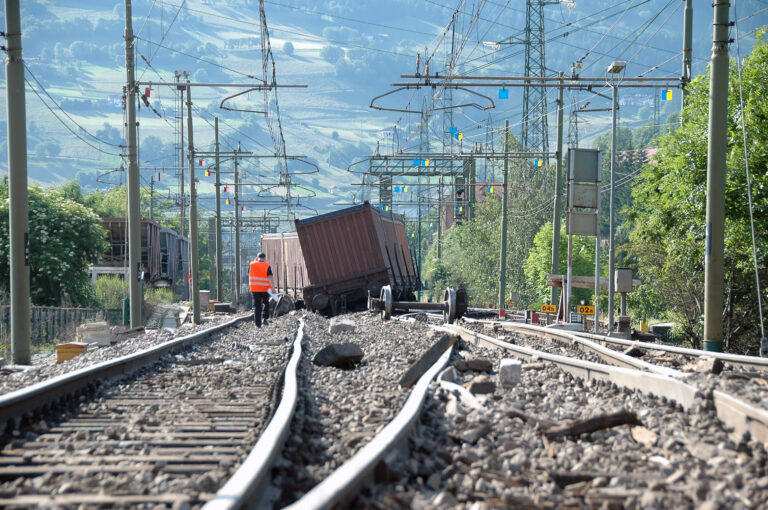The February 3 derailment of a Norfolk Southern Railway freight train transporting hazardous materials carries a lesson for all food manufacturing facilities, not just those in the East Palestine, Ohio, area where about 50 train cars derailed causing a toxic chemical spill and a massive fire. Within the two weeks following, a train with one car carrying hazardous materials derailed outside Detroit, Mich., which unfortunately is not surprising given that the U.S. sees an average of 1,000 train derailments every year, with 11 train accidents causing the release of hazardous chemicals. So, the question becomes: Does your crisis management plan include the potential impact of hazardous chemical spills?
In the Ohio derailment, 20 of the more than 100 cars were classified by Norfolk Southern as carrying hazardous material, with the full Norfolk Southern report to EPA showing cars with polyethylene and polyvinyl chloride as burned/destroyed by fire; cars/tanks with polypropylene glycol, petroleum lube oil, diethylene glycol, and ethylhexyl acrylate breached with some or most of the load lost. It should be noted that due to fire in general, potential decomposition products can be created from these released compounds into the surrounding air, soil, and water, hazardous in their own right, such as dioxin and various gaseous compounds.
EPA’s February 10 letter to Norfolk Southern documented the release/threat of release of hazardous substances, pollutants or contaminants into the environment from the derailment, stating that materials released during the incident were observed and detected in samples from Sulphur Run, Leslie Run, Bull Creek, North Fork Little Beaver Creek, Little Beaver Creek, and the Ohio River. Materials also were observed entering storm drains; and contaminated soil and free liquids were observed and potentially covered and/or filled during reconstruction of the rail line including portions of the trench/burn pit that was used for the open burn off of vinyl chloride. Additionally, EPA water tests from three locations the day after the derailment found analyte results “greater than Ohio River Basin Human Health – Nondrink Criteria” in at least one location.
EPA is continuing to post updates on its website, with the latest as of this writing from February 16, when EPA Administrator Michael Regan was to arrive on site to assess the ongoing response. As of that day, test results from the village’s municipal well sampling showed no water quality concerns and the governor issued a statement that the municipal water was safe to consume. Prior to that, EPA conducted air monitoring throughout the East Palestine community, with no levels of concern detected that can be attributed to the incident. On Feb. 13, the agency discontinued air monitoring for phosgene and hydrogen chloride, stating that “after the fire was extinguished on Feb. 8, the threat of vinyl chloride fire producing phosgene and hydrogen chloride no longer exists.”
The situation is continuing to be monitored by both the US EPA and Ohio EPA, with other agencies on alert. Additionally, various agencies are continuing to monitor water quality as the plume moves through, so this will likely be an ongoing effort in a number of states. Currently, Ohio EPA is recommending that those who receive drinking water from private water wells schedule an appointment for well water testing, and the Ohio Department of Health encourages those with private wells to use bottled water until their well water testing results are returned.
TAG Recommendations
Extending such recommendations to the food industry, TAG advises that farms and food facilities in areas potentially affected by the derailment, test your water and continue to monitor both your water and air quality. Ensure that you know the source of your water, and that of any suppliers potentially impacted by the incident. Stay attuned to and follow the advisories from the US EPA and your state’s EPA, as well as those of CDC and your local health department.
Additionally, given the impacts of this derailment and the number of derailments that occur annually, TAG recommends that all growers, manufacturers, and processors:
- Include hazardous chemical spills as a part of your risk management plan – whether you’ve been impacted by this particular incident or not. Ensure you are conducting risk assessments on environmental concerns – whether human or nature generated (e.g., natural disasters, such as tornadoes, hurricanes, earthquakes, floods, etc.) – and have a crisis plan in place in case of failure.
- Know the source of your drinking/processing water, the water table/aquifer of your area and what feeds into it (East Palestine example).
- If your farm or facility uses well water, know what is/isn’t normal for your well and its water, and when to have it tested.
- If your farm or facility uses surface water, be familiar with your watershed sources and know what is upstream that could potentially impact you. Be aware of local incidents that could negatively affect your surface water.
- If you or a supplier are located near railroad tracks, know risks. With about 4.5M tons of toxic chemicals transported by rail across the U.S. every year, and 12,000 trains carrying hazardous materials crossing through towns and cities each day, it is essential to monitor for incidents.
- Regularly monitor and test your water and air quality, and make this a part of your supplier requirements as well. Know where your suppliers are located and monitor any potential issues in those areas.
Resources
Following are some key resources for staying updated on the East Palestine derailment and other incidents or crises that may occur in your area:
- US EPA East Palestine Updates
- OHIO EMA East Palestine Updates
- Norfolk Southern Updates and Resources
- Ohio EPA
- W. Virginia EPA
- Pennsylvania EPA
- EPA in Your State
- State Health Departments
If you need assistance in a crisis or want help developing or updating your risk management plan, give TAG a call. We can help.





